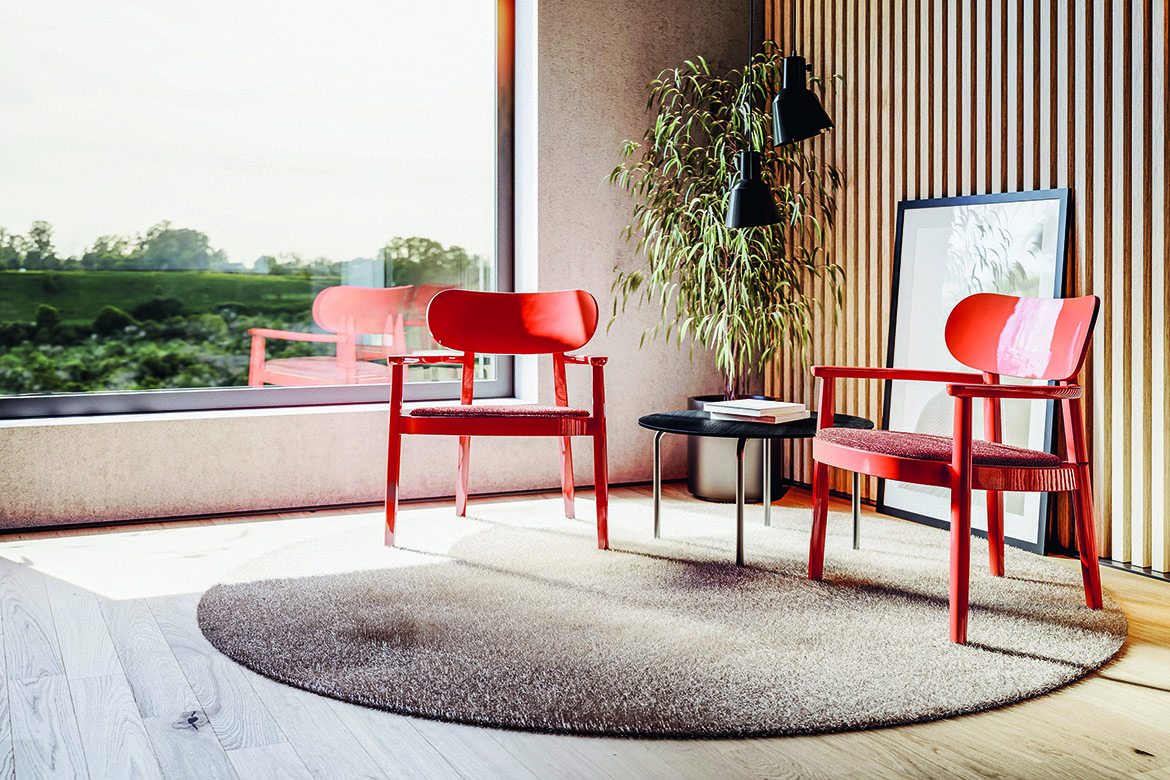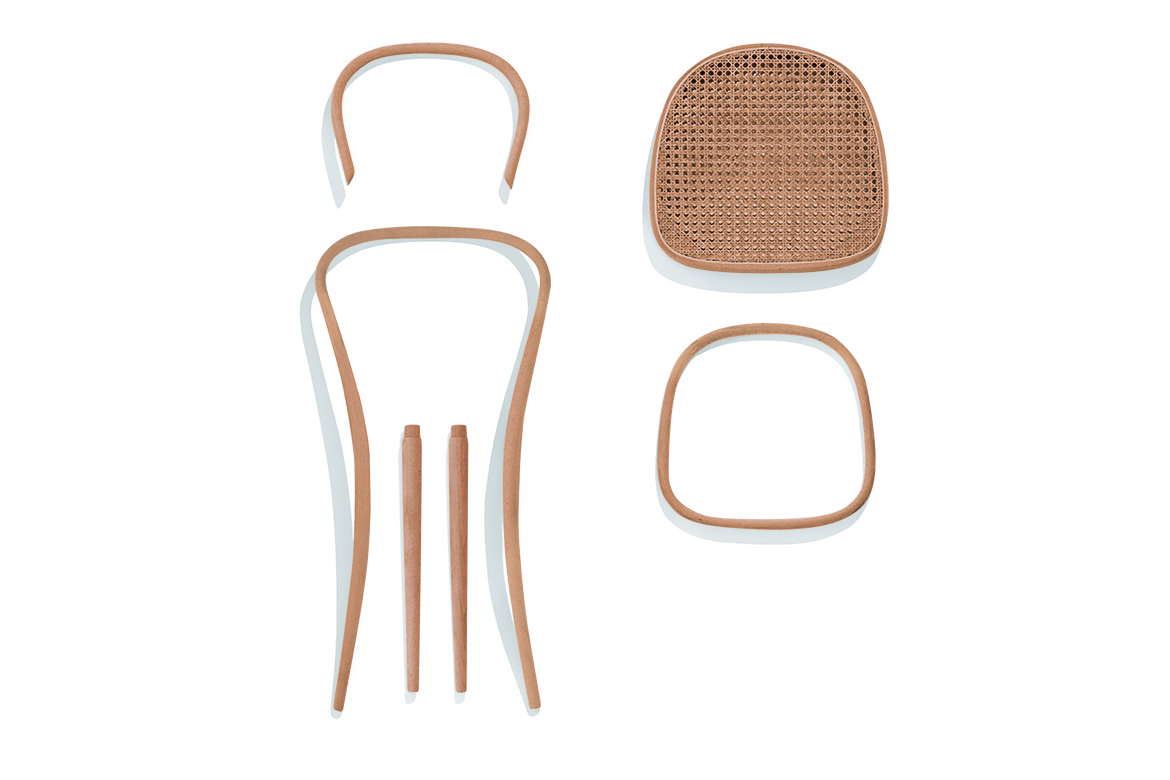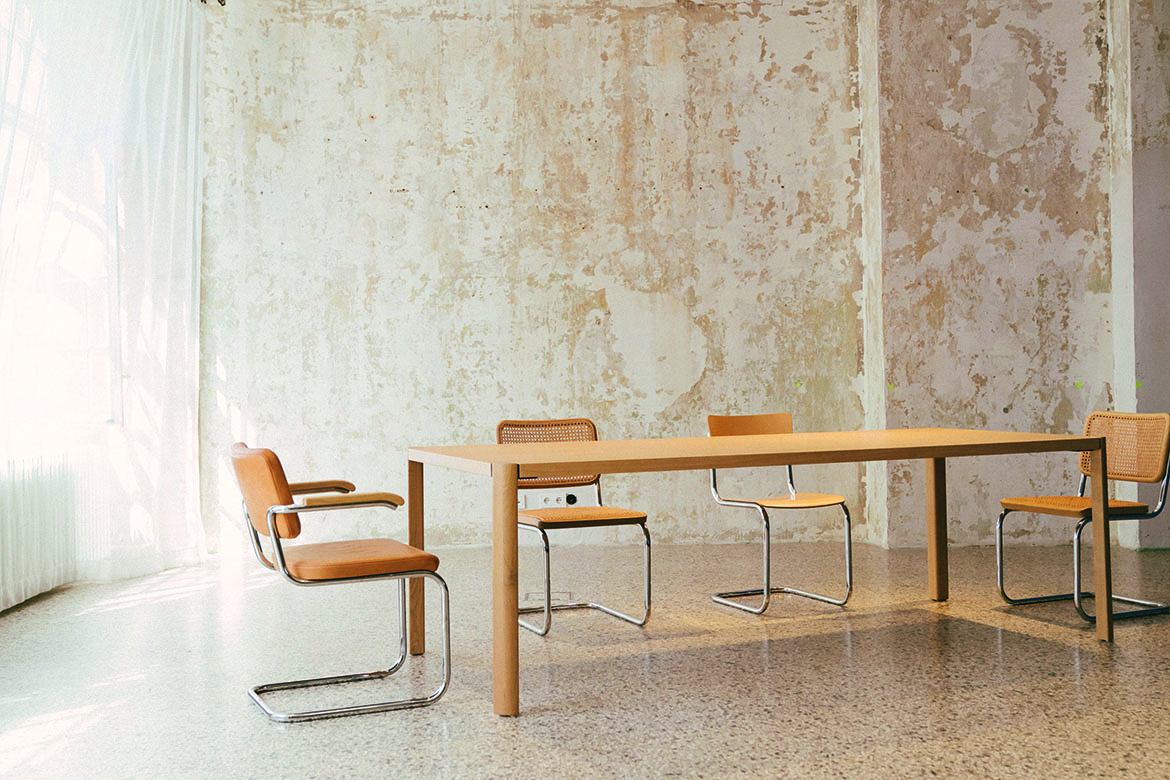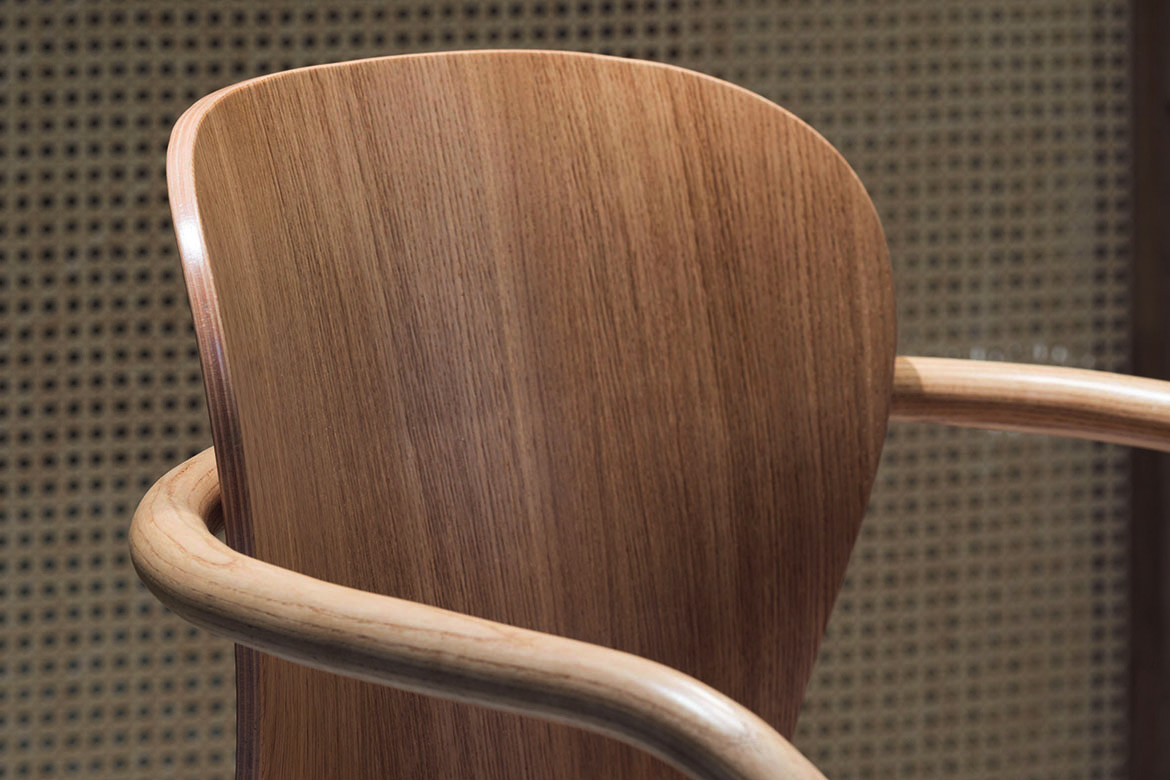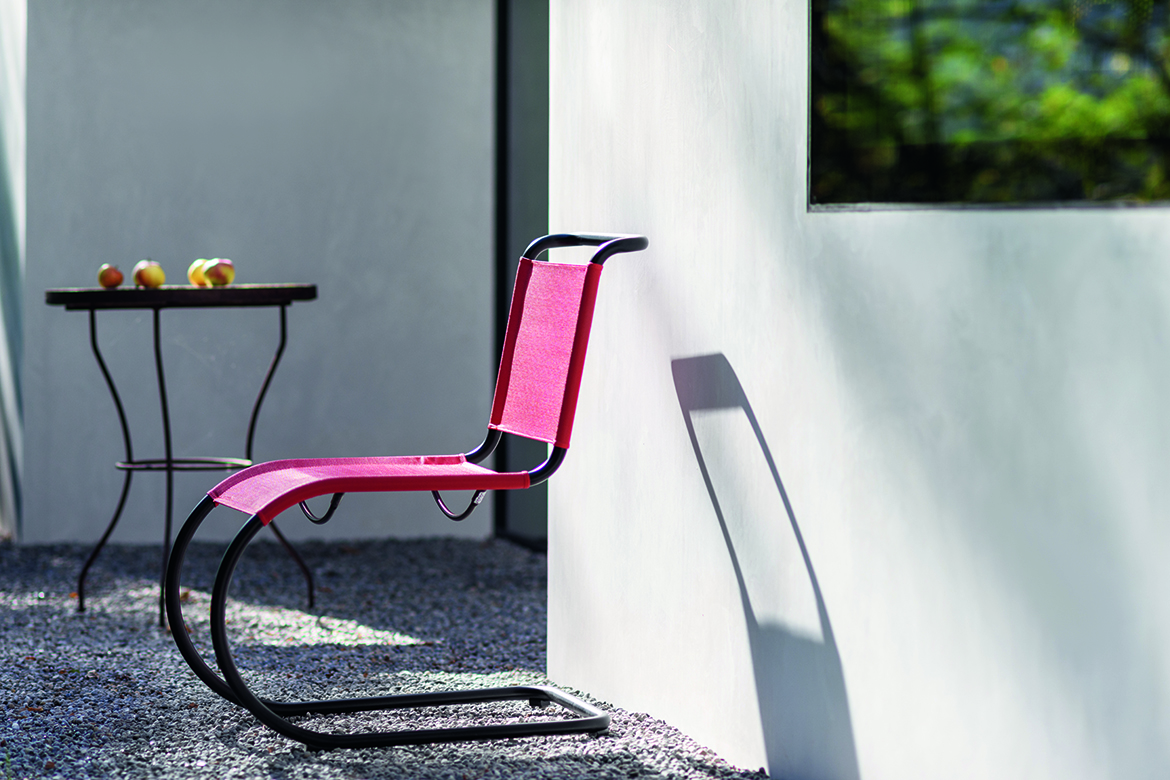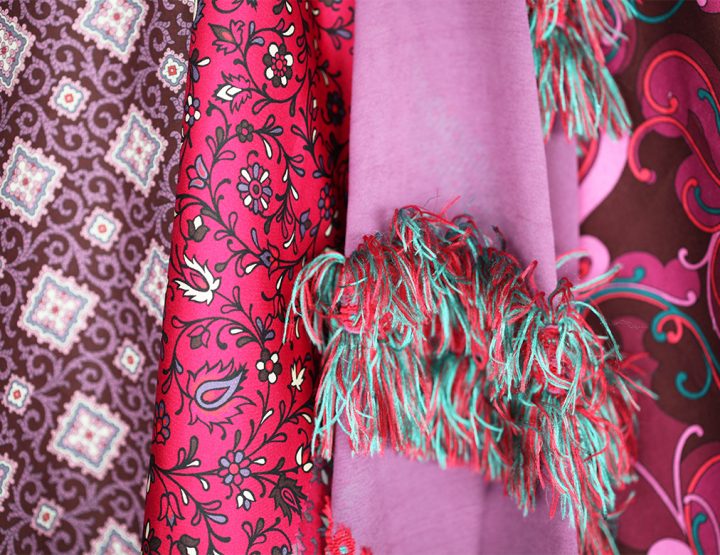Certainly among the most internationally well-known, recognisable and imitated, Thonet bentwood furniture, with more than 50 million pieces sold to date, is seen as the first designer furniture.
There are many factors to Thonet’s success and it’s still interesting to retrace some milestones to understand the precursory effect of a system, that of design, precociously intuited by Thonet.
It all began in 1819 from the workshop opened in Boppard on the Rhine by a cabinetmaker, Michael Thonet whose interest focused on experimenting with innovative techniques for bending wood. Although some bent plywood designs already date back to around 1830, the first turning point was the Thonet family moving to Vienna to fulfill the wishes of Prince von Metternich. Here Michael Thonet worked with the architect Peter Hubert Desvignes to create furniture for the Palais Liechtenstein and contributed to furnishing Schwarzenberg Palace and the Café Daum. Such eminent backing coupled with participation at important fairs of the time opened the door for Thonet to the new ruling class, the bourgeoisie, eager to build an identity also through a style that truly represented the new era.
It was only in 1856, after having re-founded the company together with his children, that bent solid wood would be a success, with the creation of chair no. 14. Made of bent beech and with the seat padded with Vienna straw, chair no. 14 marked the transition to mass production and the start of industrial production. The wood bending process involves steaming which saturates the fibres (by means of treatment in an oven) and softens the lignin contained in the wood, making the cellulose more elastic. It was a revolutionary system also because after the bending process the dried wood retains its original strength. By not relying on expensive expert cabinetmakers, Thonet invented a system, in an industrial way using moulds, that was a cheap process achieving beautiful results that won over the general public. In a period when eclectic revivals were all the rage, chair no. 14 with the round seat ring and the backrest no longer attached but screwed, offered a style free from any historical reference, a measured simplicity that fits harmoniously in any environment, home and social, proof being a purist such as Le Corbusier placing it in his Pavilion of the Esprit Nouveau in 1925. Without doubt, the chair’s success also centred on the insightfulness to have distribution supported by a sales network that stretched not only across Europe, but also reached the United States from 1873 with offices in New York and Chicago.
Another crucial factor to its success was that the chair could be disassembled; it was only made of 6 pieces, no longer assembled with glue but just with the help of screws. The impact both in terms of interchangeability but, above all, in terms of space saving, which also meant easier transport, was considerable: a box of one cubic metre could hold up to 36 disassembled chairs.
The internationalisation linked to the huge spread of chair no. 14 was only the first step towards the production of other bentwood success stories written by well-known architects of the Wiener Werkstätte, such as Adolf Loos, Otto Wagner, Josef Hoffmann and Koloman Moser. In 1912 Thonet saw a record 2 million items sold worldwide and from then the product range expanded too. The company changed material but not style in the 1930s, with the introduction of innovative tubular steel, the main material of some modern masterpieces designed by famous architects.
Iconic tubular pieces include the first models of cantilever chairs that, thanks to Mart Stam, Marcel Breuer and Ludwig Mies van der Rohe, innovated not only the materials but also the type of chair. In northern Hessen (Germany) the last Frankenberg/Eder factory, built in 1889, becomes the headquarters of the company where today, in keeping with tradition and craftsmanship, both classic Thonet bentwood and tubular steel chairs, as well as the current collections, the result of collaboration with national and international designers and the creativity of the internal Design Team, are produced. Currently led by Brian Boyd – Chief Executive Officer – and Norbert Ruf on the creative side, the company relies on the active participation (as partners and collaborators) of the fifth and sixth generation descendants of Michael Thonet.
In addition to the famous coffee house chair no. 14, designed by Michael Thonet in 1859 and today revisited with model 214, for 150 years considered an evergreen classic also thanks to its aesthetic linearity that makes it versatile and suitable to be used alongside every style, there are other models without armrests, with an open back or backrest (215) available in different leather or fabric upholstery.
Recent creations include model 119, a lounge chair by Sebastian Herkner (2021) that, following on from the successful cheerful 118 collection, uses traditional Thonet materials, from bentwood to braided Indian cane, with simple shapes offering even more comfort with the new padded version presented during Orgatec 2022. British-American designers Sam Hecht and Kim Colin (Industrial Facility) have crafted a line of chairs belonging to the 220 collection (also presented at Orgatec 2022) that gives a new twist to the technology of bent plywood, evoking a key aspect of Thonet’s heritage. Stackable, lightweight and ergonomic chairs with bent armrests that showcase once again Thonet’s importance and relevance today. Not only chairs but also other items of furniture such as table 1140, designed by Aisslinger, which interprets the idea of functionality, formal simplicity and the discerning nature typical of the company. “We wanted to come up with a table that worked in multiple scenarios (…). We wanted a sturdy table on which we could dance without bulky supports” explains the designer, a light yet strong table that, thanks to minimal use of materials and opting for FSC certified wood – the legs are in solid oak and the top is in real wood veneered blockboard – meets the eco-sustainability credentials required.
One of the special features that helps make Thonet’s products stand out, not only dedicated to interiors, is Thonet All Seasons – a collection suitable for any time of the year, designed by the Thonet Design team led by Miriam Püttner. The collection recalls the classic models in tubular steel from the Bauhaus period, such as the cantilever chairs S 33 and S 34 by Mart Stam, the coffee tables B 9, the lounge chair S 35 by Marcel Breuer and the cantilever chair S 533 by Ludwig Mies van der Rohe, reinterpreting them with upholstery in bright colours, adapting them to an outdoor as well as indoor use. A contemporary company aware of the importance of heritage, now part of the international collective imaginary, in 1989 it opened in Frankenberg/Eder the Thonet Museum that houses historical examples, from the first bentwood furniture to Libertystyle furniture, from tubular steel furniture from the Bauhaus period to post-war furniture.

